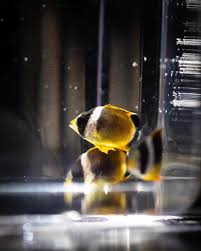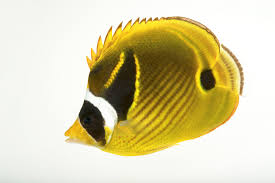
In Chinese culture, the dragon is one of the most enduring and powerful symbols. Revered as a creature of myth and magic, the dragon has long been associated with not only physical strength and imperial authority but also with protection, prosperity, and harmony. Throughout history, the dragon has played an important role in Chinese beliefs surrounding the safeguarding of wealth and family happiness. Its connection with fortune, safety, and well-being has made it a prevalent motif in various aspects of life, from ancient art to modern-day practices.
This article explores the deep-rooted beliefs about the dragon’s role in protecting wealth and ensuring family happiness, highlighting how this mythical creature is woven into the fabric of Chinese culture through symbolism, rituals, and art.
1. The Dragon’s Symbolism of Prosperity and Wealth
The dragon has long been considered a symbol of prosperity and wealth in Chinese culture. Unlike the fearsome, fire-breathing dragons in Western mythology, the Chinese dragon is a benevolent, positive force. Often depicted as a majestic creature with a serpent-like body, antler-like horns, and sharp claws, the Chinese dragon’s attributes symbolize divine power, the forces of nature, and the potential for abundant prosperity.
One of the most significant aspects of the dragon’s symbolism is its association with water, which was historically vital to Chinese agriculture. Dragons were believed to have control over the rains and rivers, ensuring bountiful harvests and the flow of water essential to the success of farming. In this context, the dragon represented the wealth and abundance of nature’s cycles.
Furthermore, the dragon’s connection to wealth is often depicted through its association with the emperor, who was seen as the “Son of Heaven” and the rightful ruler of the land. The emperor’s throne, known as the “Dragon Throne,” symbolized not only imperial power but also the prosperity of the nation. As such, the dragon was intrinsically linked to the very concept of a prosperous society, often regarded as a safeguard against financial hardship.
In the context of family wealth, the dragon was believed to bring good fortune to households, especially when it appeared in auspicious forms such as in feng shui, religious practices, and family heirlooms. The dragon’s presence was often invoked to ensure the prosperity of a family or business, guarding against misfortune and financial loss.
2. The Dragon’s Role in Family Happiness and Harmony
While the dragon is closely tied to wealth and material success, it is also a key figure in ensuring family happiness and harmony. In traditional Chinese beliefs, the family unit is considered the foundation of society, and ensuring its well-being is paramount. The dragon, with its benevolent nature, was thought to safeguard the household against both external and internal threats, including those that might disrupt family harmony.
In many parts of China, it was believed that placing dragon symbols in the home or on personal items could bring happiness, good health, and harmonious relationships among family members. The presence of a dragon was thought to dispel negative energy and misfortune, acting as a protective force against any conflicts that might arise within the family. This belief is deeply tied to the role of the dragon as a symbol of balance and harmony, both in nature and in human relationships.
In feng shui, the dragon is considered one of the most powerful symbols of good fortune. It is often used to create a harmonious and auspicious living environment, particularly in relation to the prosperity and well-being of the family. The dragon, when placed in the right position within the home, is believed to help align the family’s energies and attract positive influences. The dragon’s protective energy is thought to keep away negative forces such as illness, stress, or disputes, which could threaten family happiness.
3. The Dragon in Traditional Chinese Rituals for Protection
Beyond its symbolic significance, the dragon has also been incorporated into various Chinese rituals designed to protect wealth and ensure family happiness. From religious ceremonies to celebratory occasions, the dragon has played an essential role in safeguarding homes, businesses, and communities.
One of the most well-known traditions that incorporates the dragon is the Dragon Dance, which is performed during Chinese New Year and other festive occasions. The dragon dance, a vibrant and colorful celebration, is believed to bring good luck, prosperity, and protection to those who participate. The dragon, often portrayed by a large puppet or costume, is danced through the streets, symbolizing the warding off of evil spirits and the welcoming of good fortune into the community.
During the Chinese New Year celebrations, the dragon is often featured prominently in family rituals, especially in those related to the welcoming of wealth and the pursuit of happiness. Families display dragon motifs on decorations, gifts, and even clothing, believing that the dragon’s energy will bring blessings for the coming year. By honoring the dragon, families invoke its protection for their financial well-being and harmonious relationships.
Additionally, in traditional Chinese medicine, the dragon has been used as a symbol in the practice of healing rituals. It was believed that the dragon’s power could heal ailments and promote overall well-being, helping families to maintain their health and happiness. Certain herbs and medicinal practices were thought to have the dragon’s protective energy, contributing to the overall health of family members.
4. The Dragon in Art and Architecture: Safeguarding Wealth and Family
The dragon’s connection to wealth and family happiness is also reflected in Chinese art and architecture, where it has been used to enhance the protection and beauty of homes, palaces, and temples. Throughout history, Chinese emperors and wealthy families commissioned art that featured the dragon as a central motif, believing it would bring them protection and prosperity.
In traditional Chinese architecture, the dragon was often featured in the design of roofs, columns, and doorways. The dragon motif could be seen on the eaves of temples and palaces, signifying both divine protection and the sacred nature of the space. In these structures, the dragon not only symbolized the emperor’s power but also acted as a guardian of the property, ensuring that no harm or misfortune would befall the occupants.
Furthermore, dragon imagery was common in decorative arts, such as in ceramics, embroideries, and silk paintings. Many of these artworks were crafted specifically for the home, often intended to bring prosperity and maintain harmony within the family. The dragon, featured alongside symbols of good fortune such as the phoenix, was thought to create a balance between the forces of nature, helping families to live in peace and with abundance.
In feng shui, the placement of dragon symbols within the home was especially important. The dragon was believed to be a powerful protector when placed in the right areas of the home, such as the wealth corner or entranceway, where it could best guard against financial ruin and maintain family harmony. Artists and craftsmen would create dragon carvings and paintings for display, contributing to the overall positive energy in the home.
5. The Dragon’s Continuing Influence in Modern Chinese Society
Despite the modernization of China and the transformation of its society, the dragon’s symbolism remains deeply ingrained in Chinese culture, particularly in the realms of wealth and family happiness. In contemporary China, dragon imagery is still widely used in everything from marketing and branding to interior design and personal symbolism.
For many Chinese families today, the dragon continues to serve as a guardian and protector, particularly in relation to prosperity and family well-being. Business owners may display dragon statues in their stores or offices to attract good fortune, while families may hang dragon-themed decorations during the Lunar New Year to invoke blessings for the year ahead. The dragon is still regarded as a divine protector that wards off bad luck and invites happiness and success.
Additionally, Chinese people living abroad continue to honor the dragon as a symbol of their cultural heritage and as a way to connect with their roots. In communities around the world, dragon dances and other traditional celebrations remain a central part of Chinese New Year festivities, reflecting the ongoing significance of the dragon in protecting wealth and fostering family happiness.
6. Conclusion: The Timeless Protection of the Dragon
The dragon’s role in protecting wealth and ensuring family happiness in Chinese culture is an enduring belief that has persisted for centuries. From its symbolism in ancient myths and legends to its prominent place in rituals, art, and architecture, the dragon is seen as a powerful guardian of both material prosperity and familial harmony. It is a symbol of good fortune, divine protection, and the continuous flow of wealth and happiness through the generations.
As Chinese society continues to evolve, the dragon’s influence remains strong, a testament to the resilience of cultural traditions and the enduring power of symbolic belief. Whether through the celebratory rhythms of the dragon dance, the careful placement of dragon imagery in the home, or the invocation of the dragon’s energy in feng shui practices, the dragon continues to protect, bless, and bring prosperity to the families of China, both near and far.










